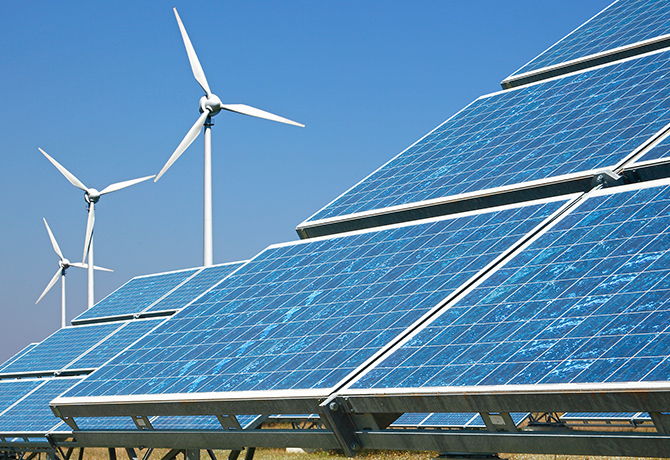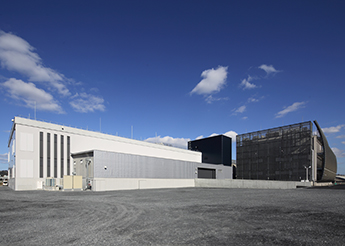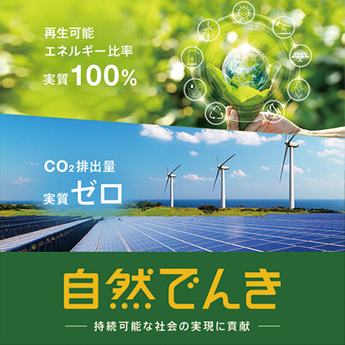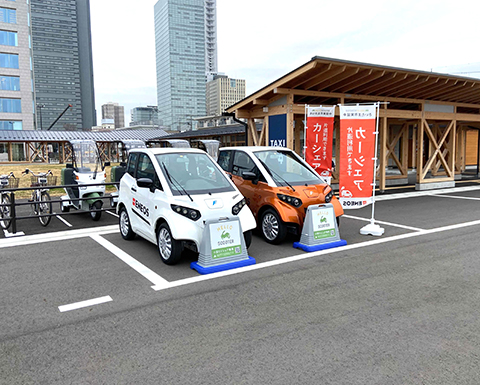Climate Change


SoftBank Corp. supports the TCFD recommendations and the Paris Agreement, a new international framework for reducing greenhouse gas emissions after 2020 that will replace the Kyoto Protocol, and aims to proactively disclose information related to climate change and achieve reduction targets. In addition, the Company has set “contributing to the global environment with the power of technology” as a material issue, and will promote efficient use of electricity through the use of AI and IoT, as well as the introduction, diffusion, and expansion of renewable energy to realize a prosperous society through the diffusion of natural energy.
Support for the TCFD recommendations

In April 2020, SoftBank announced its support for the TCFD (Task Force on Climate-related Financial Disclosures)* recommendations. Based on the TCFD recommendations, we will strive to proactively disclose and enhance information in accordance with the “Governance, Strategy, Risk Management, Metrics and Objectives” framework recommended by the TCFD for companies. For details on disclosure in accordance with the 11 items recommended for disclosure by the TCFD, please review “Disclosure Based on TCFD Recommendations”.
- [Note]
-
- *Task Force on Climate-related Financial Disclosures: an international initiative established by the Financial Stability Board in 2015 which recommends that companies disclose information about the financial impact of climate-related risks and opportunities on businesses.
- *
Disclosure Based on TCFD recommendations
(PDF: 2.25MB/17 pages)
Environmental impact data
To manage the risks and opportunities that climate change represents for SoftBank, we monitor data on environmental impacts.
As a main target, we have set Carbon Neutral 2030 to achieve zero greenhouse gas emissions from the electricity and other energy used in our business activities (Scope 1 and 2) by 2030, aiming to achieve the SDGs. Also, we have set the target of net-zero which is to reduce “supply chain emissions” (Scope 1, 2, and 3), including greenhouse gas emissions from suppliers and other sources (Scope 3), to zero by 2050. Towards achieving net-zero by 2050, we accomplished the effective use of renewable energy for 50% of the power consumption at our base stations in fiscal year 2021. We increased this to 70% in fiscal year 2022 and 80% in fiscal year 2023, gradually implementing the effective use of renewable energy. Furthermore, we will promote to reduce greenhouse gas emissions for the electricity used in all our facilities and equipment other than base stations.
Please refer to the “ESG Data Book” for details of environmental impact data disclosure, including energy consumption and greenhouse gas emissions.
In principle, coverage in fiscal year 2023 will be 99% of consolidated sales.
Energy Management
Company conducts energy management to monitor, manage, analyze, and optimize energy consumption throughout the organization. By repeatedly planning, implementing, evaluating, and improving energy consumption reduction plans, we aim to achieve contributions to the global environment and society, such as reducing environmental impact and complying with laws and regulations.
As part of our efforts to reduce energy consumption, we review facilities such as offices, network centers, and data centers, and promote the update to energy-efficient equipment and the removal of unnecessary devices.
Resource usage /
Greenhouse gas emissions
| Item (Unit) | FY2020 | FY2021 | FY2022 | FY2023 | |
|---|---|---|---|---|---|
| Electricity usage (MWh) | 1,680,530 | 2,117,259 | 2,278,902 | 2,435,781 | |
| Included renewable energy (MWh) | 324,766 | 631,248 | 998,571 | 1,241,828 | |
| City gas (m³) | 4,914,000 | 3,256,578 | 3,067,817 | 507,580 | |
| Bunker A fuel oil (kl) | 198 | 213 | 354 | 202 | |
| Energy consumption intensity * (MWh/Gbps) |
1,124 | 1,084 | 979 | 890 | |
- [Note]
-
- *Electric power consumption at 1 Gbps
- *
| Item (Unit) | FY2020 | FY2021 | FY2022 | FY2023 |
|---|---|---|---|---|
| Scope 1, 2 (t-CO2) |
620,929 | 708,534 | 579,919 | 520,662 |
| GHG Emissions Intensity * (t-CO2/Gbps) |
411 | 359 | 249 | 204 |
- [Note]
-
- *Greenhouse gas emissions at 1 Gbps
- *
| Item (Unit) |
Category | FY2020 | FY2021 | FY2022 | FY2023 | Calculation Methodology |
|---|---|---|---|---|---|---|
| Scope3 (t-CO2) |
3,121,487*1 | 8,685,602 | 9,368,649 | 9,287,493 | - | |
| 1. Products and services purchased | 340,222 | 2,715,644 | 2,916,405 | 3,061,864 | Calculated by multiplying the purchase price of products and services by an emission factor that includes the procurement and transportation stages of each product. | |
| 2. Capital goods | 1,446,099 | 1,211,839 | 1,312,591 | 1,094,719 | Capital investment multiplied by emission factor per price of capital goods | |
| 3. Energy-related activities not included in Scope 1 and 2 | 113,432*2 | 991,026 | 1,262,619 | 952,921 | The amount of electricity and heat used is multiplied by the emission factor for fuel procurement, etc. in the manufacturing process, and if electricity is procured from outside for sale, the amount of electricity is multiplied by the emission factor for fuel procurement. | |
| 4. Transportation, delivery (upstream) | 26,481 | 192,923 | 147,001 | 215,315 | Emission factor per value is multiplied by the transportation cost for horizontal transportation and outbound transportation (procurement transportation is included in Category 1). | |
| 5. Waste from business activities | 837 | 2,702 | 1,986 | 2,937 | Calculated by multiplying the weight of industrial waste by emission factors for each waste type and treatment method. | |
| 6. Business trip | 4,216 | 6,149 | 14,780 | 23,097 | Calculated by multiplying the amount of business travel expenses paid by the emission factor per transportation expense paid by transportation category, the number of overnight stays multiplied by the emission factor per overnight stay, and the total mileage of the rental car by the emission factor for fuel consumption by maximum payload by fuel type. | |
| 7. Employer commuting | 12,634 | 15,980 | 17,295 | 26,095 | Calculated by multiplying the employee's total commuting distance by the emission factor per passenger-kilometer for each transportation category, and by multiplying the electricity consumption during telework by the emission factor for electricity. | |
| 8. Leased assets (upstream) | 94,282 | 376,440 | 428,056 | 449,889 | Calculated by multiplying the total floor area of warehouses and rental offices by the emission factor for each building use and per unit area, and by the electricity emission factor for the electricity consumed by the communication facilities installed and operated in the leased property. | |
| 9. Transportation, delivery (downstream) | 603,376 | 716,763 | 678,913 | 627,508 | For outbound shipments, transportation costs are multiplied by an emission factor per money value. | |
| 10. Processing of sold products | - | 0 | 0 | 0 | (Not applicable to calculation) | |
| 11. Use of products sold | 449,008 | 2,275,537 | 2,397,972 | 2,559,800 | Calculated by multiplying the number of products sold or rented by the lifetime electricity consumption and electricity emission factor for each product. | |
| 12. Disposal of sold products | 762 | 148,668 | 160,830 | 181,231 | Calculated by multiplying the total weight of products sold by the emission factor for each waste type. | |
| 13. Leased assets (downstream) | - | 48 | 961 | 67,688 | Annual emissions are calculated by multiplying the number of products rented by the emission factor for electricity consumption and electricity | |
| 14. franchise | 30,138 | 31,883 | 29,242 | 24,429 | Calculated by multiplying the total floor area of franchise stores by the emission factor for each building use and per unit area. | |
| 15. Investment | - | 0 | 0 | 0 | (Not applicable to calculation) |
- [Notes]
-
- *1The coverage for FY20 greenhouse gas emissions (Scope 3) differs from other years.
- *2Fuel- and energy-related activities not included in Scope 2
- *Third-party verification has been obtained.(Limited level of assurance based on ISO 14064-3)
- *1
Mid/long-term plan for reducing greenhouse gas emissions
| Item (Unit) | Boundary | Coverage | Plan | ||||||
|---|---|---|---|---|---|---|---|---|---|
| FY2024 | FY2025 | FY2026 | FY2027 | FY2028 | FY2030 | ||||
| Sum of Scope 1 and 2 (t-CO2) |
SB + Major Subsidiaries | 100% | 520,000 | 506,000 | 482,000 | 457,000 | 433,000 | 0 | |
Major initiatives
Climate change mitigation
Initiatives to achieve Net-Zero

We are working to achieve net-zero to reduce GHG emissions (Scope 1, 2, and 3) from the entire supply chain to zero by 2050.
Renewable energy for base station
SoftBank's primary business is in mobile communications, and about half of the electricity it consumes is used to power its base stations.
More than 70% of the base station power was converted to effectively renewable energy in FY2022, and in FY2023, this increased to over 80%. The plan is to increase the ratio to 90% by FY2024, and we will promote the phased conversion to renewable energy to reduce greenhouse gas emissions.
Group company initiatives
LY Corporation has announced the “2030 Carbon Neutral Declaration” to reduce greenhouse gas (GHG) emissions from the business activities of all LY Corporation Group companies, to zero by fiscal year 2030 In June 2022, we joined “RE100,” an international initiative to declare that 100% of the electricity used in our business activities will come from renewable energy sources.
Tree planting activities by employees
With the cooperation of the “NPO CCC Furano Nature School” led by Mr. Satoshi Kuramoto, we hold an original program “Summer Holiday Nature School for Parents and Children” for our employees with the themes of “building healthy relationships between parents and children” and “thinking about the environment and nature”.
Since its inception in 2007, a total of more than 250 parents and children have participated in activities such as planting trees on former golf course sites and returning them to their original forests for the future.
Smart forestry R&D
In collaboration with the Forestry and Forest Products Research Institute, we have started a demonstration experiment to realize smart forestry through the use of quadruped robots.
We will work to resolve issues such as the declining domestic supply-demand ratio of lumber due to the aging of Japan's forestry industry, labor shortages, lack of price competitiveness, and other factors, as well as the negative impact on the environment caused by the resulting reduction in CO2 absorption by forests.
Demonstration test of electric quadruped robots for use in transporting cargo, etc., toward realization of smart forestry.
External evaluation
CDP 2023 Climate Change
“A-” rating

In recognition of its strategy and response to climate change, SoftBank Corp. received an “A-” rating for the fourth consecutive year from the CDP (headquarters: London, UK), an international non-profit organization that conducts environmental assessments of major companies and cities around the world.
In addition, the company was selected for the “LeaderBoard,” the highest rating, in recognition of its efforts to combat climate change throughout its supply chain, for the third consecutive year.
Verified by Science Based Targets Initiative

SoftBank Corp.'s greenhouse gas reduction targets were verified by the Science Based Targets initiative (SBTi) as “SBT (1.5°C level)” based on scientific evidence in June 2021.
Decarbonization
Management Ranking,
GX (Green Transformation) 500
In the 2023 edition of the “Decarbonization Management Ranking GX500” by The Nikkei, which ranks the decarbonization efforts of the top 500 leading companies, the Company has achieved the highest rating.
The 2nd
Sotokoto SDGs Award 2022
Contribution to the SDGs through technology, particularly efforts addressing climate change and issues related to the circular economy, have been recognized, resulting in the receipt of a special award.
Adaptation to climate change
| Responding to Larger Natural Disasters |
SoftBank endeavors to fulfill its infrastructural responsibilities as a telecom service operator in response to natural disasters that have grown in scale in recent years. To this end, we have identified the construction of a high-quality infrastructure for society as a material issue and are regularly implementing measures focused on maintaining our telecommunications infrastructure during times of disaster. |
|---|
Reducing greenhouse gas emissions
A range of energy saving measures such as controlled lighting levels and optimized air conditioning timing in accordance with the Act on the Rational Use of Energy (Energy Saving Act) and the Tokyo Metropolitan Environmental Preservation Ordinance are being implemented at the building where SoftBank Corp. headquarters are located.
In addition, at its headquarters and network and data centers, SoftBank has received ISO14001, an international certification for environmental management systems, and is actively working to reduce its electricity consumption. We optimize temperature settings of air conditioners at base stations and network centers to enable normal operation of equipment, proactively use equipment that is best-in-class for energy conservation, and promote optimal energy use through the periodic replacement of old or outdated equipment. At data centers in particular, a reduction in energy consumption is being seen through the implementation of heat analysis visualization and localized air conditioning, among other efforts.
Reduction of CO2 emissions
SoftBank obtains Eco ICT mark

SoftBank supports the aims of the ICT Ecology Guideline Council and have acquired the ICT echo mark, which is awarded to corporations that meet certain criteria set by the ICT Ecology Guideline Council. The mark was acquired following a self-assessment by the companies of initiatives to reduce CO2 emissions at their businesses, such as the formulation of procurement criteria for equipment and services that focus on reducing CO2 emissions.
Required item
| Creation of a voluntary environmental action plan, etc. | |
|---|---|
| Evaluation item | Implementation status and initiative details |
| Have you formulated and put into operation a voluntary environmental action plan which describes various initiatives for the purpose of reducing CO2 emissions through energy conservation? | In addition to enacting environmental action guidelines to engage in the maintenance and preservation of the environment, we have established environmental targets for the entire company which include the reduction of the amount of energy usage, the promotion of the use of recycled paper, the proper disposal of industrial waste, and the implementation of green procurement and environmental education programs. |
| Does the voluntary environmental action plan incorporate specific initiatives which describe various numerical targets for the purpose of reducing CO2 emissions through energy conservation? | As an environmental target, we have established a numerical target for the reduction of power consumption which is being undertaken by the entire company. |
| In addition to internally and externally publicizing the voluntary environmental action plan, are you engaging in activities to educate and communicate with employees to strive to improve their environmental awareness? | We have published the environmental action guidelines and environmental targets on this web site. Moreover, we have posted this information on the CSR page of the Company intranet for the employees while also striving to improve the awareness of each individual employee by providing regular e-learning and the dissemination of educational information about environmental awareness. |
| Are you releasing information about the status of implementation and achievement of various initiatives described in the voluntary environmental action plan? | We have published such information about our environmental initiatives under the “Environment” section of this web site. |
| Procurement-related initiatives | |
| Evaluation item | Implementation status and initiative details |
| Have you created any procurement standards for ICT equipment and data centers based on the evaluation criteria stipulated in these guidelines, and are you conducting procurement in accordance with those standards? | In order to promote the introduction of products which help encourage a reduction in CO2 emissions, we enacted a set of “Green Procurement Guidelines” for all of our business partners which describe our basic approach to green procurement, and we are carrying out procurement activities in accordance with these guidelines. |
| Are you conducting green procurement and other forms of procurement which consider energy conservation for business machines used in the office, goods, and distribution? | We have adopted recycled paper products which conform with the Eco Mark standard for our copier paper. Moreover, we are promoting the purchasing of low environmental load products for our stationery supplies such as Eco Mark products and products which conform wiGreen Purchasing Act. |
| Promotion system | |
| Evaluation item | Implementation status and initiative details |
| Have you established a department or person in charge of initiatives to reduce CO2 emissions through energy conservation? | We are reducing greenhouse effect gases across the entire company through an secretariat run by the CSR Division. |
| Are you appropriately assessing the status of implementation and achievement of targets, etc. listed in the voluntary environmental action plan while also maintaining a system to perform internal audits? | After receiving ISO14001 certification, we are creating and appropriately reviewing environmental targets, checking the status of implementation and achievement of those targets, and conducting internal audits. We are maintaining a system to ensure that this type of environmental management system PDCA cycle is executed in the appropriate manner. |
Optional item
| Initiatives for other environmental measures | |
|---|---|
| Evaluation item | Implementation status and initiative details |
| Does the company engage in environmentally friendly initiatives in addition to energy conservation efforts. | We are actively working to promote higher recycling rates for used cell phones, reduce the use of cell phone packaging boxes and bundled paper resources, and reduce the amount of waste from telecommunications equipment and construction waste. |
| Does the company engage in environmental conservation activities in cooperation with local communities. | We grant two days of “volunteer leave” per year, and every year several employees use this system to participate in various environmental conservation activities in cooperation with local communities, such as afforestation and cleanup activities. |
Improving energy efficiency at data centers

LY Corporation and IDC Frontier Inc. work to raise energy efficiency at data centers. Its Kitakyushu Data Center (Kitakyushu City, Fukuoka) is the first large commercial data center in Japan to adopt air conditioning using outside air. The data center has realized energy conservation through the optimization of high-density server operations and air conditioning efficiency, and as a result, has won a number of awards.
In addition, at the Shirakawa Data Center in Shirakawa City, Fukushima Prefecture, IDC Frontier - using the area's cooler climate and the high-level expertise acquired from its experience in operating the Kitakyushu Data Center - has developed an in-building external air conditioner system that combines architecture capable of drawing external air directly into the building with air conditioner functions in order to process exhaust heat from servers. This system enables the data center to use cool external air for over 90% of its air conditioning needs.
Completed in 2018, Shirakawa Data Center's building no. 5 employs a hybrid air conditioning system that combines external air and water cooling with air cooling functions. It is expected to achieve a high cooling efficiency of approximately PUE* of 1.2.
In addition, the data center analyzes and verifies energy conservation effects to continuously promote further energy conservation.
- [Note]
-
- *Power Usage Effectiveness
An indicator of data center energy efficiency, the PUE is calculated by dividing the overall power consumption of the data center by the power consumption of its IT equipment. In general, data centers in Japan commonly have a PUE value of 2.0 or less.
- *
Realization of telecommunications infrastructure with low environmental impact
Company has developed a system called “HAPS (High Altitude Platform Station)” to provide communication networks from high altitudes, along with developing the unmanned aircraft “Sunglider” that flies in the stratosphere. Through advancements in solar power generation and energy storage technology, we aim to achieve environmentally low-impact infrastructure that provides stable flight and communication services.
Reduction of environmental impact through the development of next-generation batteries
We are working on reducing environmental impact through research and development aimed at the development and practical application of next-generation batteries. The increasing power consumption due to the evolution of devices is leading to higher CO2 emissions. By increasing the capacity and energy density of batteries integrated into devices, we can enhance the performance and efficiency of devices and equipment, thereby reducing the environmental impact. In June 2021, SoftBank established the ‘SoftBank Next-Generation Battery Lab.’ to evaluate and verify various next-generation batteries from around the world. In October 2021, in collaboration with Enpower Greentech in the United States, the lab successfully demonstrated a lightweight and high-capacity lithium metal battery with a specific energy density exceeding conventional batteries by more than double (520 Wh/kg class).
Moving forward, we aim to become a platform that accelerates the development of next-generation batteries through research and development efforts and early practical applications.
SoftBank established the ‘SoftBank Next-Generation Battery Lab’ (in Japanese)
Promotion and expansion of renewable energy
The devastation caused by the Great East Japan Earthquake and the incident at Tokyo Electric Power's Fukushima Daiichi Nuclear Power Plant has stimulated interest in energy demand and power-saving programs in Japan and has had a profound effect on the lives of people, not only in East Japan, but throughout the entire country. We recognizes the energy issue as a challenge that concerns the whole of Japan and believes that the promotion and expansion of safe and renewable energy is one of the solutions.

We established the Renewable Energy Governors' Alliance at the prefecture level and the Renewable Energy Governors' Alliance for Designated Cities at the urban level and began serving as secretariat for these two alliances, with the chairman of the board and also the Representative Director, Chairman, President and Chief Executive Officer of the parent company, SoftBank group Corp., as the secretary general. Through the alliances, together with 34 prefectures throughout Japan and the local governments of 20 cities, we share policy recommendations and information as an associate member, to promote the spread of renewable energy.
We support public policies related to promoting renewable energy as a measure against climate change and disaster prevention caused by global warming. In 2022, we made policy recommendations to the Ministry of the Environment and the Ministry of Economy, Trade and Industry regarding the promotion of proactive fiscal expenditures for achieving a decarbonized society. These recommendations included budgetary measures for achieving carbon neutrality by 2050 and the introduction of carbon pricing.
In addition, at our network center located in Toda City, Saitama Prefecture, we have installed solar panels with an annual power generation capacity of approximately 10,000 kWh. We have also installed wireless base stations equipped with solar panels, commonly known as “eco base stations.” During favorable weather conditions, it is possible to meet all the energy requirements for operating the base stations through solar power generation.
Providing environmentally friendly electricity services
Initiatives for spreading renewable energy

We and SB Power Co., Ltd. offer “Shizen-Denki,” a rate menu for households with 100% renewable energy and zero CO2 emissions*1 in the Hokkaido, Tohoku, Tokyo, Chubu, Kansai, Chugoku, Shikoku, and Kyushu power supply areas.In addition, SB Power contributes 50 yen per month per “Shizen-Denki” subscription to support the activities of forest conservation organizations*2. In FY2022, we generated an annual reduction of approximately 38,000 tons of CO2 emissions through the provision of “Shizen-Denki”.
In addition, in order to respond to the accelerating trend toward decarbonization among companies and municipalities, SoftBank Electric for Biz Environmental Option, an electricity service for corporate customers, will offer an optional service with a low environmental impact from February 2021. In FY 2022, through the provision of “SoftBank Denki for Biz,” we generated a reduction effect of approximately 5,500 t-CO2 in annual CO2 emissions.
We and SB Power will continue to contribute to the realization of an environmentally friendly society by providing electric power services that make substantial use of renewable energy.
- [Notes]
-
- *1By combining the electricity supplied to customers with non-fossil certificates designated as a renewable energy, this service realizes the supply of electricity with a renewable energy ratio of 100% and zero CO2 emissions.
- *2Donations to organizations that execute projects certified under the J-Credit Scheme operated by the Ministry of Economy, Trade and Industry; the Ministry of the Environment; and the Ministry of Agriculture, Forestry and Fisheries.
- *1
Promoting the Sharing Economy
Our group company, OpenStreet Corporation, provides an environmentally friendly shared mobility service that allows people to use mobility as a means of transportation without owning it.
Through the shared cycling platform “HELLO CYCLING” and the multi-mobility sharing service “HELLO MOBILITY, ” we are developing “multi-mobility stations” where bicycles, scooters, and micro EVs can be rented from a single location in cooperation with local governments and partner companies. This service is being developed in cooperation with local governments and partner companies.
In addition to improving the convenience of transportation in the city, this system contributes to the realization of a low-carbon society by supplying a portion of the electricity used for each vehicle from renewable energy sources. We will continue our efforts to promote electric mobility using renewable energy and realize a society that coexists with the global environment.
As of June 2022, HELLO CYCLING stations will be installed in approximately 5,000 locations in 200 cities, wards, towns, and villages throughout Japan, with more to come.


Implement policy recommendations and collaborate with external organizations to achieve carbon neutrality in Japan
In order to quickly achieve a decarbonized society and resolve climate change issues and the energy crisis, we will work with external partners who are aware of the climate change crisis and are committed to achieving the 1.5°C target, and promote global warming countermeasures through collaboration with trade associations and policy advocacy.
We regularly check the consistency of our climate change policy/measures with those of our member organizations, and if we believe that an organization's policy/measures are partially inadequate, we will work with the member companies to strengthen their policy/measures. If the policy/measures are significantly inadequate, we will consider the possibility of withdrawing from the organization.
Company established the ESG Committee in March 2020 as an advisory body to the Board of Directors. The President and CEO assumed the role of Chief ESG Officer, holding ultimate responsibility for the overall sustainability activities, including climate change mitigation, under the supervision of the Board of Directors.
Regarding our involvement in external organizations (including trade associations) and engagement in public policy, such as lobbying, we report to the ESG Committee. The Chief ESG Officer (President and CEO) holds the ultimate responsibility, and significant matters are reported to the Board of Directors.
Furthermore, under the responsibility of the Executive Officer in Charge of ESG and the General Manager of the ESG Promotion Office, the activities and lobbying of the external organizations to which we belong are monitored, including evaluation and management to ensure that they align with the principles of the Paris Agreement.
Activities aimed at policy recommendations
With the spread of generative AI, the development of data centers is being advanced to meet the increasing demand for large-scale data processing and to build new digital social infrastructure.
On the other hand, the increase in electricity requirements due to the expansion of data centers, which consume large amounts of electricity, is a major international issue. To achieve carbon neutrality, there is a growing need to secure decarbonized power sources and promote Green Transformation (GX) to operate data centers.
In response to this situation, the Company's President and CEO, Miyakawa, has participated in expert meetings and basic policy subcommittees organized by relevant government ministries. He has made policy recommendations on the need for regional decentralization of data centers and securing local decarbonized power generation to achieve decarbonization. The Company's stance has been published as an interim report by the relevant ministries. We will continue to promote the realization of a carbon-neutral and decarbonized society in Japan, as well as the advancement of Japanese industries.
Participation in ETI-CGC, an industry-academia collaborative creation platform
We are participating as the only telecommunications carrier to be a founding member of the Energy Transition Initiative Center for Global Commons (ETI-CGC), an industry-academia collaborative platform established by the Global Commons Center (CGC) at the University of Tokyo with 13 voluntary Japanese companies to discuss pathways and policies for Japan to achieve decarbonization by the middle of this century.
We will contribute to achieving Japan's goal of net-zero GHG emissions by 2050 by participating in various activities such as the compilation of policy proposals at the ETI-CGC, utilizing knowledge gained from our current efforts in providing DX solutions, business operations such as Digital Twin, and telecommunications infrastructure operations.
In order to explore pathways and make policy proposals to make Japan's energy system carbon neutral in 2050, we will collaborate with the Energy Transitions Commission (ETC) and hold regular discussions with ETI-CGC members on energy transitions that will achieve carbon neutrality.
Participation in the Climate Change Initiative
(Japan Climate Initiative: JCI)
We participate in the Climate Change Initiative (Japan Climate Initiative: JCI), a network of non-governmental actors in Japan that is actively working to achieve the 1.5°C target, and promote a decarbonized society together with companies, local governments, organizations, and NGOs that are actively working to combat climate change.
Joined Japan Climate Leaders' Partnership (JCLP)
We are a supporting member of the “Japan Climate Leaders' Partnership (JCLP),” an enterprise group aimed at realizing a sustainable decarbonized society. We will contribute to the development of a sustainable society by strengthening our own efforts toward decarbonization, through understanding the latest trends in initiatives toward a decarbonized society, and by building relationships with companies that are leading the way.
Participation in various trade associations
| GSMA | At the GSMA, a member of the global telecommunications industrial group, we participate in the Climate Action Task Force which addresses environmental issues such as climate change. GSMA promotes the setting of SBTs (science-based targets to limit global warming to 1.5°C) for its member companies, including us. |
|---|---|
| TCA |
In addition, we participate in the Environment Subcommittee of the Telecommunications Carriers Association (TCA), whose members are telecommunications carriers in Japan, and work with member companies to promote climate change countermeasures and resource recycling initiatives as an industry group. The president and the CEO of the company, who is also the Chief ESG Officer, is contributing to the promotion of activities by serving as the Chairman of TCA and a member of the GSMA Board of Directors in FY2020. In 2017, TCA developed a carbon neutral action plan for the telecommunications industry in Japan, setting environmental targets (e.g., improvement of electricity efficiency per telecommunications volume) for 2020 (Phase 1) and 2030 (Phase 2). We have been involved in the formulation of goals and other activities in cooperation with member companies, and have achieved Phase 1 target of more than five times the power efficiency per communication volume in FY2020 (compared to FY13) by improving the efficiency by 6.7 times through the introduction of communication equipment with superior energy-saving performance and the promotion of efficient facility construction and operation. In phase 2, we have set a target to improve the power efficiency by 10 times or more in FY2030. |
Activities / Sponsorship
Support for GX League

SoftBank Corp. participates the “GX League” announced by the Ministry of Economy, Trade and Industry. We are working with other participating companies to contribute to the transformation of the overall economic and social system and creation of new markets from the perspectives of achieving carbon neutrality by 2050 and achieving a positive cycle of economic growth and environmental sustainability.
Support for COOL CHOICE

SoftBank supports COOL CHOICE, a national campaign conducted by the Ministry of the Environment to mitigate global warming.
COOL CHOICE encourages people to make environmentally conscious choices, such as choosing energy-efficient, low-carbon products, services and activities.
As activities to promote and expand renewable energy, we will contribute to solving the problem of global warming by offering “Shizen-Denki” plans that utilize real renewable energy.
Participating in the “Fun to Share” climate change campaign

SoftBank is a supporter of “Fun to Share”, a climate change campaign sponsored by Japan's Ministry of the Environment. Fun to Share is a means to share wisdom and technology in order to build a rich and low-carbon society in an enjoyable manner for everyone. Through participation in the campaign, SoftBank is promoting increased awareness and voluntary action among employees to implement continued energy efficiency at work sites and in work processes, encouraging and “cool biz” and “warm biz” (wearing cooler clothing during summer and warmer clothing during winter) on the Intranet to help realize a low-carbon society.
Participation in the “Green x Digital Consortium”

We are participating in the “Green x Digital Consortium” established by the Japan Electronics and Information Technology Industries Association (JEITA). The “Green x Digital Consortium” aims to contribute to the realization of carbon neutrality in 2050 by optimizing the country's industries and society as a whole through initiatives related to the digitization of environment-related fields and the creation of new business models, and is contributing to achieving this goal through net-zero activities.